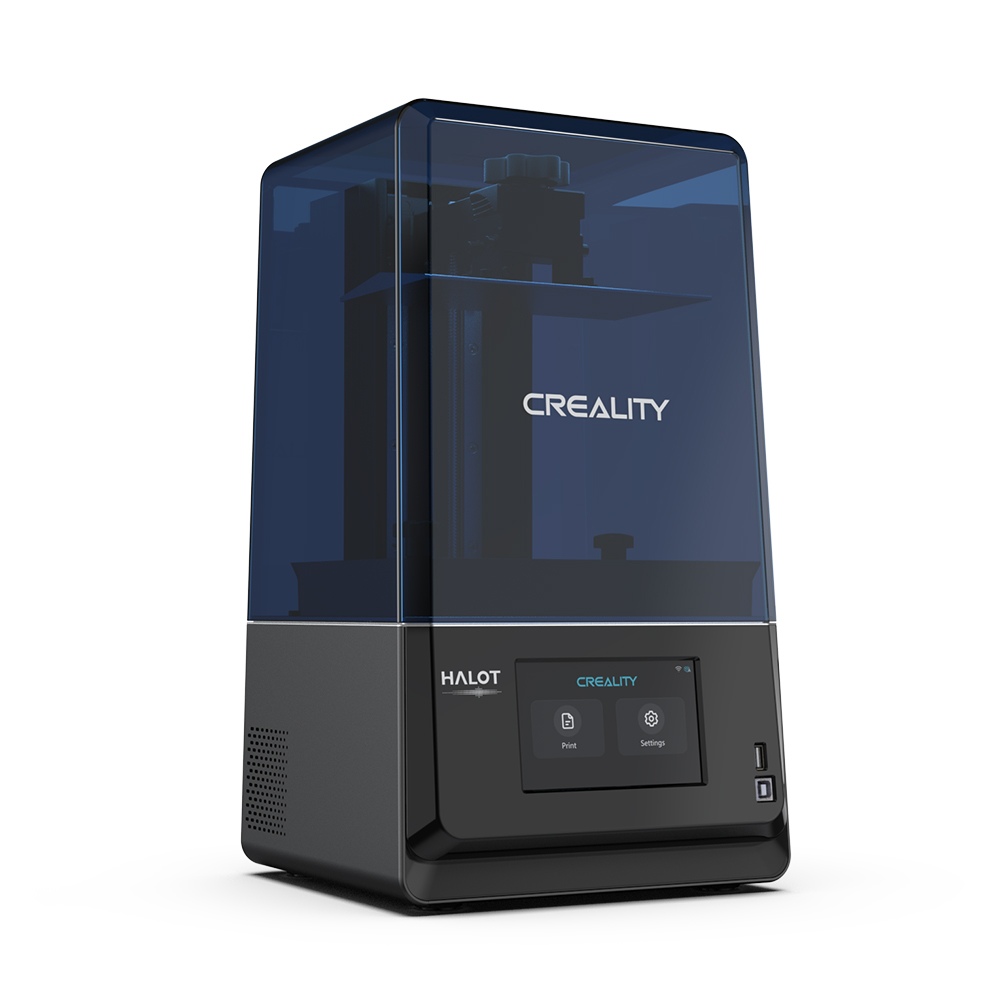Compare Halot One Plus vs Comgrow T300
Comparison between the best 3D printers
Choose the best 3D printer at the best price. The cheapest 3D printers are here.
Buy a 3D printer here with 3D Fila.
 |
 |
|
| Model | Halot One Plus[BUY Halot One Plus] |
Comgrow T300 |
| Printing Material | Resin | Filament |
| Buy Resin for Creality 3D Halot One Plus | Buy Filament forSovol Comgrow T300 | |
| Estimated price | $399,00 | $449,00 |
| Manufacturer | Creality 3D | Sovol |
| Release Year | 2022 | 2024 |
| Print Volume [mm] | 102x172x160 | 300x300x350 |
| Printer Size [mm] | 236x245x416 | 503x631x831 |
| Weight [kg] | 6,8 | 17 |
| Power Loss Recovery | NO | YES |
| Maximum Resolution [mm] | 0,1 | |
| Processor | 64 bit | |
| Display | Touchscreen 5'' | |
| Power Supply | 150 W | |
| Connectivity | USB / Wi-Fi | USB, WiFi |
| Operating systems | Windows, Linux, Macbook | |
| Date of registration in the system | 2022-10-11 | 2024-05-10 |
| Release date | 2022 | 2024 |
| Extra features | Crealitys Halot-One Plus printer stands out for its 4K+ resolution that delivers sharp details and consistent surfaces. It features a fast and responsive 5-inch LCD interface, as well as easy-to-use Halot Box software. It offers Wi-Fi connectivity and remote print monitoring, as well as an integrated air filtration unit, a rare feature in this price range. The Halot-One Plus is designed for the prosumer market, combining high quality with advanced features such as Wi-Fi and air filtration. During testing, it stood out for implementing these features at an affordable cost, while maintaining functionality. It features an attractive design with a UV-resistant blue cover and a robust dual rail system for the Z-axis, ensuring smooth and consistent movements. The large LCD and high resolution of the LCD mask (4320 x 2560) are other strong points, allowing for fine details and textures in prints. | The Sovol Comgrow T300 printer stands out for its technological innovations and advanced features. With a print size of 300mm300mm350mm, the T300 offers true linear rails on all axes, ensuring greater stability. Its Klipper-based intelligent core and 64-bit microcomputer increase printing speed and quality through pressure advancement and input shaping. The extruder with a gear ratio of 6.5:1 allows for more precise material control, optimizing the printing of flexible materials. In addition, the T300 features a rapid filament cooling system with a high-speed fan and a circular duct piece that improves cooling efficiency. With a 4.3-inch high-refresh rate touchscreen and an 81-point automatic leveling system, the T300 simplifies the preparation and execution of 3D prints. |
| Support for multiple colors and materials (AMS and CFS) | NO | NO |
Notes * |
||
| Cost-benefit | 8 / 10 | 7 / 10 |
| Hardware | 1.2 / 10 | 3.2 / 10 |
| Tela | . | . |
| Print volume | 3 / 10 | 4 / 10 |
| Performance | 9 / 10 | 5 / 10 |
| [BUY Halot One Plus] |
Conclusion |
| In concluding the comparison between the Halot One Plus and the Comgrow T300 3D printers, several factors come into play, including price, features, performance, and overall usability. The Halot One Plus presents itself as a compact and affordable solution for those entering the resin printing market. With its high resolution and integrated air filtration, it is particularly appealing to users seeking high-detail prints in a smaller form factor. Its connectivity options, including Wi-Fi, alongside user-friendly software, make it an excellent choice for prosumers looking for quality without overwhelming complexity. In contrast, the Comgrow T300 is larger and designed for those who require a greater print volume and more advanced functionalities. Its technological innovations, such as true linear rails and a Klipper-based operating system, not only enhance print speed but also quality, especially when dealing with varied materials. The inclusion of a rapid cooling system and sophisticated leveling capabilities positions it as a robust option for serious hobbyists or professionals needing reliability and expansive capabilities. Both printers exhibit a commendable cost-benefit ratio and performance ratings, yet they cater to different user needs. The Halot One Plus excels in resolution and ease of use, while the Comgrow T300 shines in its build size and technological advancements. Ultimately, the choice between the two depends on the specific requirements of the user—whether they prioritize detail and compact design or robust functionality and larger print capabilities. |

